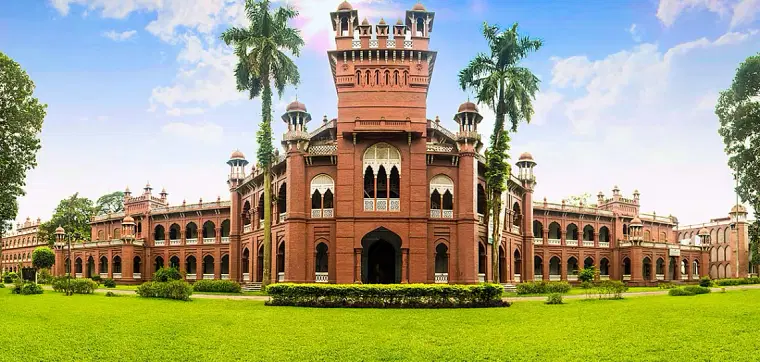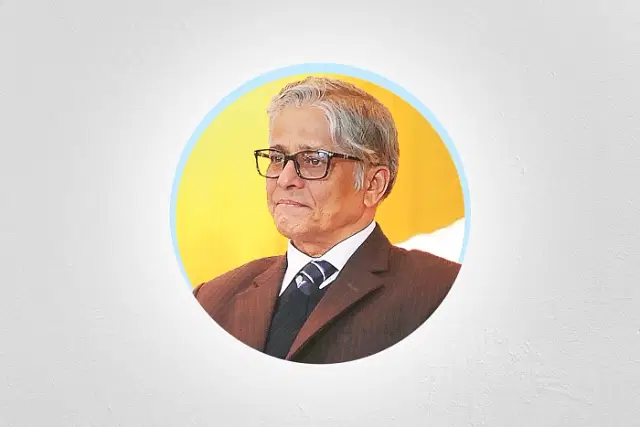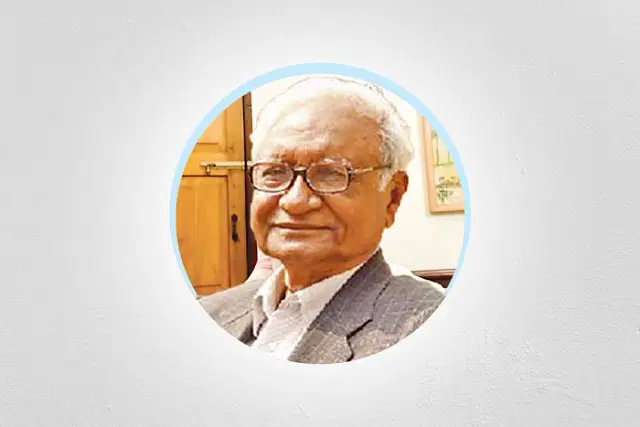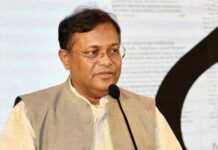
Almost every year new departments are being opened up at Dhaka University. Students have increased and so have teachers. Large numbers of administration staff have been appointed. The university has grown massive in size.
Unfortunately, qualitative improvement has been far below expectations. The standard of education and research, innovation, the classrooms, hall facilities for the students, and the number of foreign teachers and students, have all been progressively diminishing.
These factors have led to a steady fall in Dhaka University’s global ranking. According to Quacquarelli Symonds (QS), the UK-based research organisation dealing with university rankings, Dhaka University ranks at 801 on the list of 1,003 universities in the world. Even in 2012 Dhaka University ranked at 601.
Dhaka University has nothing to be proud of in its standard of education, research and innovation. It’s glory lies in the language movement, the war of liberation, the anti-autocracy movement, and student politics of the past.
The present vice chancellor Md Akhteruzzaman has his list of factors for which Dhaka University should be proud. This includes the size of the university, the low cost of education and the price of snacks like singara and samoosa. “It’s an amazing record!” he said at a virtual discussion on 2 October commemorating the 72nd anniversary of Dhaka University Alumni Association. He was referring to the large number of students at the university as well as the low fees.
The theme of the discussion was ‘100 years of Dhaka University, our pride and time to repay our debts’. The vice chancellor went on to say that foreign delegations are amazed at the size of Dhaka University. They say, “It’s a huge and massive university.”
Earlier, in January last year, the vice chancellor also boasted about how one could have a cup of tea, a singara, samoosa and potato chop for just Tk 10 at the TSC (Teacher-Student Centre) cafeteria. He said, “This is our pride, our heritage.” The university hardly can take credit for the low cost of education, tea and singara. After all, the money comes from the public’s pockets.

He said, “There is no environment for studies at Dhaka University, no incentive, no investment. These are discouraged at a state level. But I am happy that despite all of this, there is still research being carried out.”
New departments are opening up almost every year at Dhaka University. Basically it has been over the past two decades that new departments have been opened, new teachers appointed and a higher number of students admitted.
According to the university records, in the year 2000 there were 47 departments at the university. Now there are 84. And in a matter of two decades, the number of institutes have increased from 9 to 12. The number of students has increased from 22,500 to 37,000. And teachers have more than doubled in number.
In these two decades, the number of research centres and bureaus has increased from 16 to 56. And there are 4,417 administrative staff members.
Evening courses are run by 35 departments and institutes of the university. Outside of the regular students, over 7,000 students are admitted into various courses. Their classes are conducted by 725 teachers. This is a source of extra income for the teachers. However, there are allegations that after taking classes round the clock, the teachers pay less attention to studies and research.
With the increased number of new departments, it is difficult to avail a vacant classroom in the Arts Building now. The Department of Sanskrit and the Department of Pali and Buddhist Studies do not have any classrooms of their own. These two departments use the same classroom in turns. The Farsi language and literature department and the Urdu department also have no classroom. Most departments have a crisis of classrooms. Many teachers do not have their own room. It is said that those who have good rapport with the university administration, are given priority in getting rooms.
When asked about this crisis in classrooms and teachers’ rooms, associate professor of the social science faculty’s anthropology department, Zubeida Nasrin, said her department had only one classroom and four rooms for 20 teachers. Several teachers had to share one room. She said, exam papers can’t be taken home, yet there is no room for the teachers to check the exam papers. This creates a lot of problems.
In 2012 and 2015, at the initiative of certain teachers of Dhaka University’s department of mass communication and journalism, two new departments were opened – the department of television, film and photography, and the department of printing and publication studies. The communication disorders department which opened in 2013, has affinity with the department of mass communication and journalism.
The department of television, film and photography opened in 2012. The journalism department already taught television, film and photography and still does. Teachers of the journalism department as well as students passing out from the department, joined this new department as chairman and teachers. The department now has six full-time teachers who had been teachers and students of the journalism department.
A batch of 23 students of the television, film and photography department completed their post-graduation in 2018. It was possible to collect information on what 13 of them were doing at present. Two years since passing out, 5 of them are still unemployed (trying to get into government service), 3 have become cinematographers and photographers, 2 are working for private companies, one is in politics and two are in business.
The printing and publications department opened in 2015. Its first chairman, Sudhangshu Shekhar Roy, was a part-time teacher at the journalism department for long. The five full-time teachers of the department had all studied at the department of journalism.
When asked what teachers of the journalism department taught at the department of printing and publication studies, the department’s chairman Sudhangshu Shekhar Roy told Prothom Alo that the world of printing and publications was vast. It covers journals, books, product labels, garment labels, medical publications and more. He said that the teachers joining new to the department are given lessons for six months on printing and publications.
Breaking away from the management department of the business studies faculty, the department of organisation studies and leadership started up in 2016. Every year 55 students are admitted to this department. It has 6 teachers.
In 2005, also breaking away from the management department, the management information systems department was formed. It has 23 teachers with 120 students admitted annually.
Dhaka University has a department of disaster science and management, founded in 2012. The same year the university opened up the disaster management and vulnerability studies institute. Every year 30 students are admitted to the department and the institute. These have 25 teachers.
In 2007, breaking away from the department of physics, the theoretical physics department was created, but it closed down two years ago due to lack of infrastructure and teachers.
While the finance department has banking as a subject in its curriculum, a separate banking and insurance department has opened up.
Dhaka University’s department of pharmacy opened up in 1964. In 2003 the department closed and in its place three departments were opened – the department of clinical pharmacy and pharmacology, the pharmaceutical chemistry department, and the department of pharmaceutical technology. In 2010 the pharmacy department was reopened and so there are now four departments dealing with pharmacy subject.
The department of pharmacy has only two teachers, while the other departments of this subject have many more. The pharmaceutical chemistry department has 24 teachers, the department of clinical pharmacy has 23 teachers and the pharmaceutical technology department has 24.
Former chairman of the pharmacy department professor Sitesh Chandra Bachar, speaking to Prothom Alo, held teacher politics responsible for the predicament of the pharmacy department. He said at one time the pro-BNP teachers wanted to destroy the department. Now the divisions in the Blue Panel were obstructing the department from advancing. However, the present vice chancellor has assured them that the department would be strengthened.
The QS ranking, broadly, takes 6 factors into consideration with a score of 100. This includes academic reputation 40, reputation in the job market 40, teacher-student ratio 20, citations per faculty 20 and international teachers and students 5.
Topping the QS rankings is the Massachusetts Institute of Technology (MIT) of the US. The QS website says it has a very high standard of research output. Oxford University in the UK also has a very high standard of research. And about the so-called ‘Oxford of the East’, Dhaka University, it says the research output here is mediocre.
While it has grown in size over the past three decades, Dhaka University’s quality has deteriorated, admitted the university’s pro-vice chancellor (education), professor ASM Maksud Kamal. However, he blames the poor ranking on the failure to provide proper facts and figures.
When asked why there was only a few foreign students at Dhaka University, he said the university has no vision for higher studies. Universities in China, Malaysia and Korea had this vision.

Dhaka University emeritus professor Serajul Islam Choudhury feels that the university does not encourage research and publications. He said the university has grown in size but not in standard of education and research. This is not just in the university, but in the overall education of the country.
Over the past 10 years, Dhaka University has seen 15 new departments and the appointment of over 900 new teachers. Convenor of the white panel of pro-BNP and Jamaat teachers, professor ABM Obaidul Islam, told Prothom Alo the pro-government blue panel teachers opened up new departments unnecessarily to appoint new teacher of their ilk and strengthen their camp. When it was pointed out that it was the same during the BNP rule, he said it was not to such an extent.
Earlier a Dhaka University certificate meant the job candidate was competent. Now when we interview the candidates, we find most of them simply depend on memorising their studies.
The influence of the Awami League-backed blue panel in the Dhaka University Teachers’ Association (DUTA) elections has increased. In the last election, the blue panel grabbed 14 of the 15 posts. ASM Maksud Kamal won 933 votes for the post of the association’s president. The pro-BNP white panel’s candidate for the same post, professor Laila Nur Islam, won less half the number of votes, 438. Most of the posts were won by the blue panel contestants with a huge margin of votes.
In the past 13 years, only in 2008 could a white panel candidate clinch the post of DUTA president. In 2011 a white panel teacher managed to win the post of general secretary. During the rule of the four-party alliance government, there was stiff contest between the teachers of the white and blue panels. In three elections then, (2003, 2004, and 2005), the blue panel won the posts of president and general secretary. The difference in votes had been narrow.
Former joint convenor and Dhaka University syndicate member Mohammad Humayun Kabir, speaking to Prothom Alo, said that the allegations about appointing teachers on political consideration was completely false. There may be an exception in 1 or 2 per cent of the cases, he said.
The budget of Dhaka University has increased by around 2.75 per cent in a matter of 8 years, totaling Tk 8.7 billon (Tk 870 crore) at present. Of this, 86 per cent is grants from the University Grants Commission (UGC), which is basically taxpayer’s money. Of the university’s budget, 70 per cent is for the salaries, allowance and retirement benefits of the teachers and administration staff. Another 23 per cent is for supplies and service which includes repairs and maintenance, jousting, transport, etc. The remaining 7 per cent is on other sectors. The allocation for research is poor. In 2020-21, the allocation for research is around Tk 420 million (Tk 42 crore), just 4.7 per cent of the budget.
Around Tk 235,000 is spent per student at Dhaka University annually. The public pays just over Tk 200,000 of this. Questions have arisen about spending the people’s money on opening departments of less importance and similar to each other.
Most students, upon leaving university, look towards government jobs. But the scope of public service is limited and most of the employment lies in the private sector. However the university fails to provide a competent workforce equipped with the skills required to meet the industrial sectors’ demands.
President of the Dhaka Chamber of Commerce and Industry (DCCI), Shams Mahmud, said, “Earlier a Dhaka University certificate meant the job candidate was competent. Now when we interview the candidates, we find most of them simply depend on memorising their studies.”
Dhaka University emeritus professor Serajul Islam Choudhury feels that the university does not encourage research and publications. He said the university has grown in size but not in standard of education and research. This is not just in the university, but in the overall education of the country.
*This report appeared in the print and online edition of Prothom Alo and has been rewritten for the English version by Ayesha Kabir









